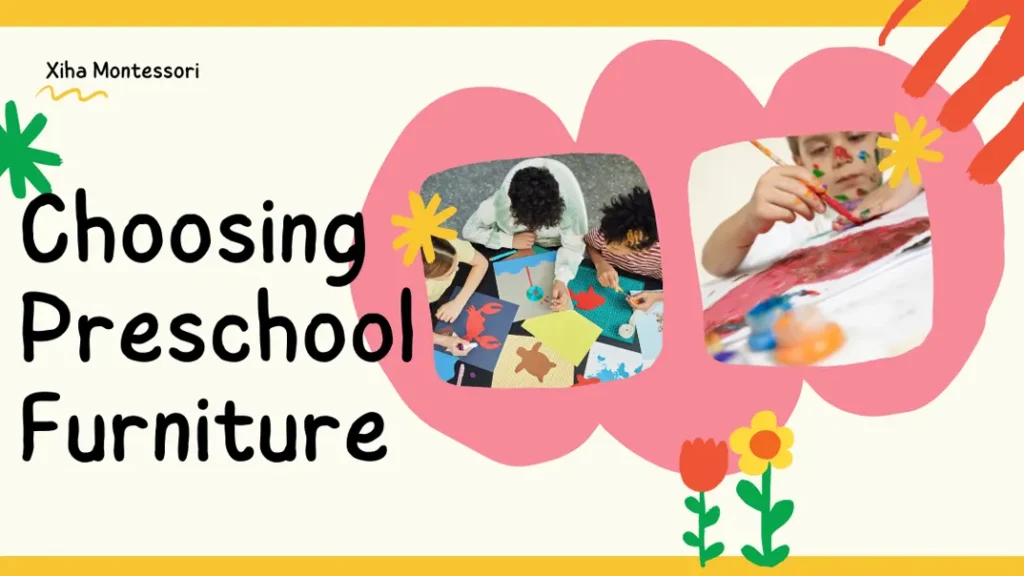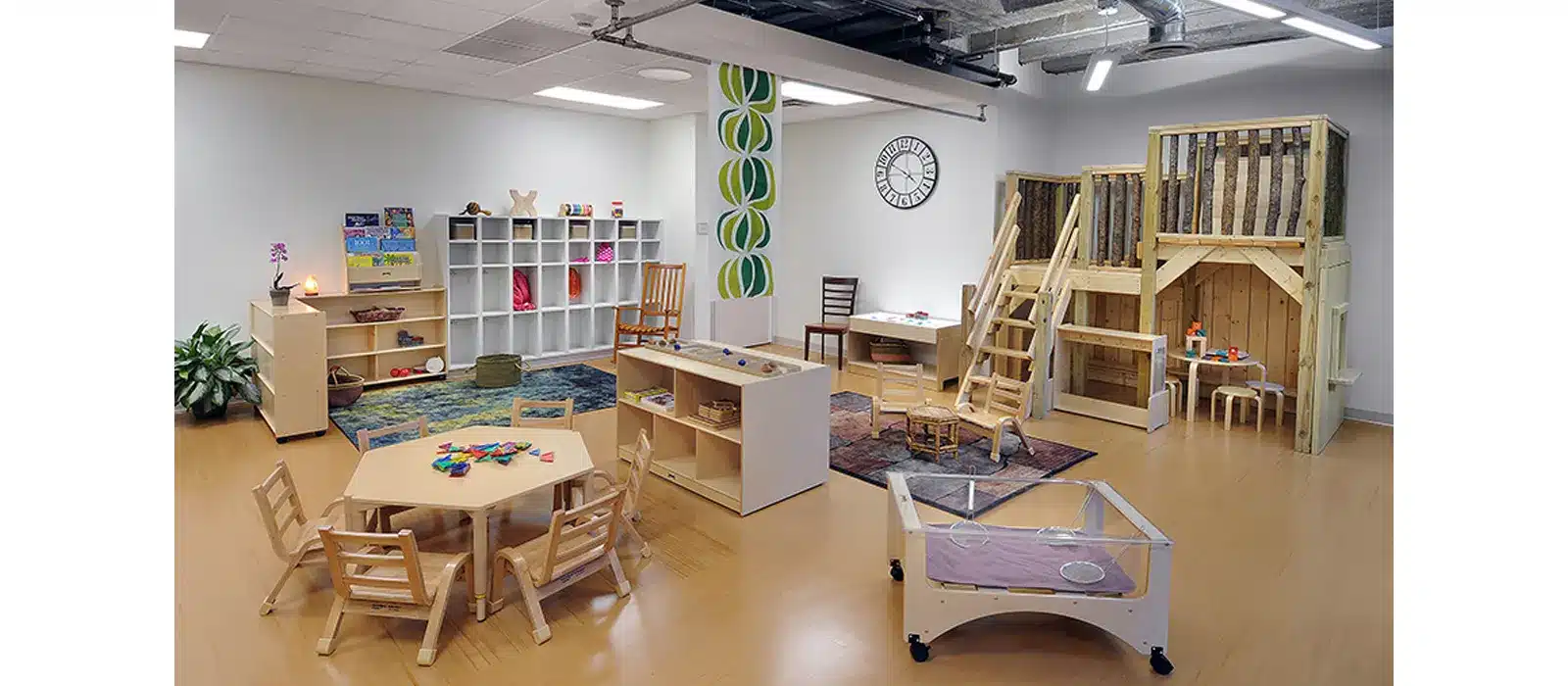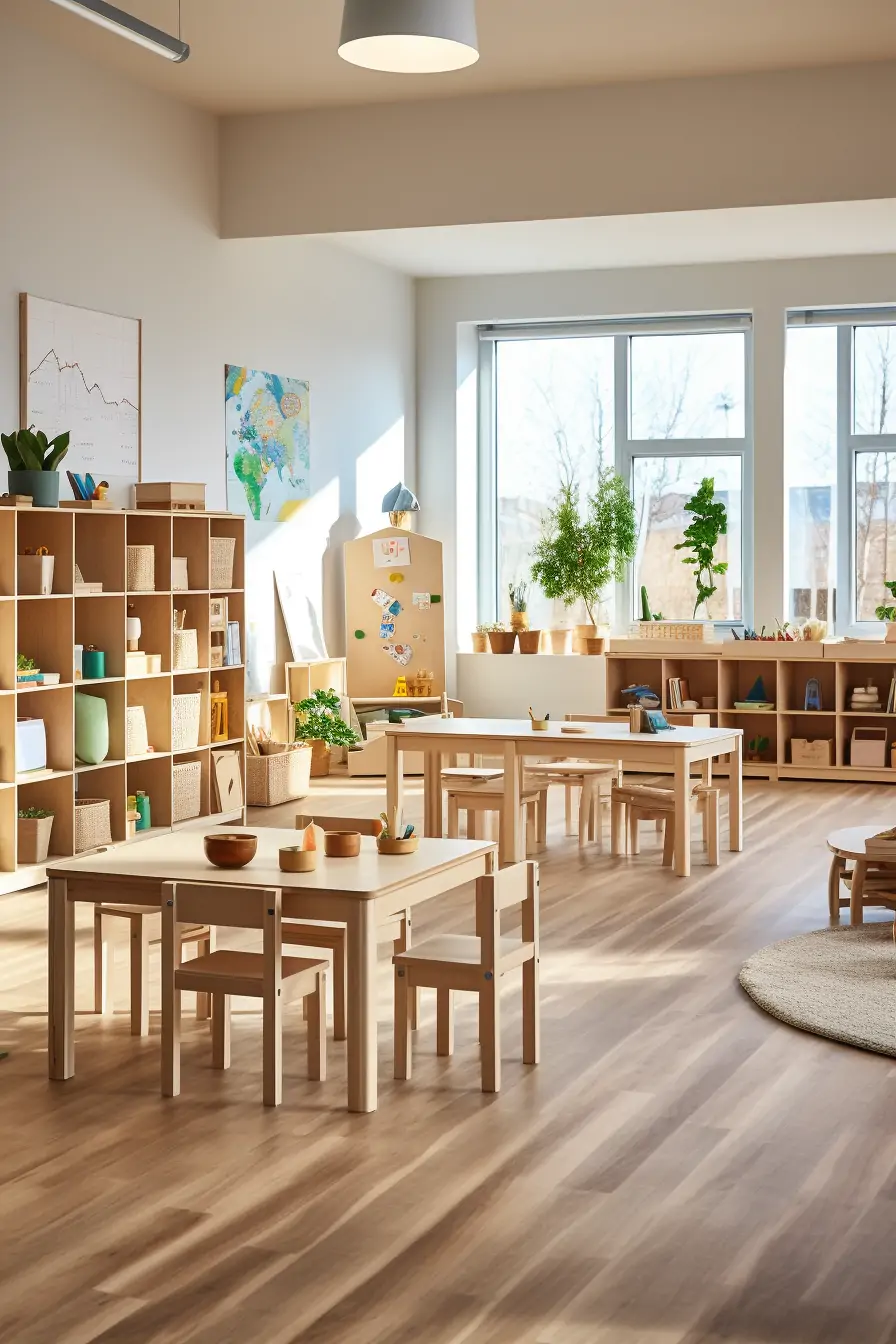As a leader in preschool furniture, I’ve faced many challenges in creating the ideal learning environment. Choosing furniture for your preschool is a crucial component that affects not only the aesthetics of your young children but also their safety and learning development.
Choosing preschool furniture fits to consider safety, ergonomics, adaptability, educational value and aesthetic appeal. At Xiha Montessori, we specialize in making furniture that meets these criteria, ensuring a safe, engaging and developmentally appropriate environment for young learners.
Furniture is crucial in creating a safe, functional, and stimulating learning environment for young children. By focusing on the specific needs of preschoolers, we can ensure that the furniture we choose meets their physical requirements and enhances their cognitive and social development. With so many options available, choosing the right furniture for your preschool can be a daunting task. In this blog, we’ll explore what needs to be considered when selecting furniture for your preschool to ensure it meets the needs of your students and staff.
How to Choosing Furniture for a Preschool?
When choosing furniture for your preschool, several essential factors must be considered to ensure a safe and conducive learning environment. Making the wrong choice can lead to increased costs and even potential danger to young children.
The Importance of Preschool Furniture
- Enhancing Learning Experiences: Appropriate preschool furniture facilitates many learning activities. Tables and chairs that are appropriately sized help children focus better and participate actively in lessons. Ergonomic furniture supports natural postures, reducing fatigue and discomfort during long periods of sitting.
- Promoting Safety: Safety is a paramount concern in any preschool setting. Furniture with rounded edges, non-toxic materials, and stable structures minimizes the risk of injuries.
- Encouraging Social Interaction: Furniture arrangement can influence social dynamics in a classroom. Group tables and communal seating areas foster collaboration and communication among children.
- Supporting Independence: Child-sized preschool furniture empowers children to manage their own belongings and participate in classroom activities.
Common Preschool Furniture
Preschool furniture encompasses a variety of items, each serving a distinct purpose. Understanding the different types of furniture available can help you make informed decisions that enhance the learning environment.
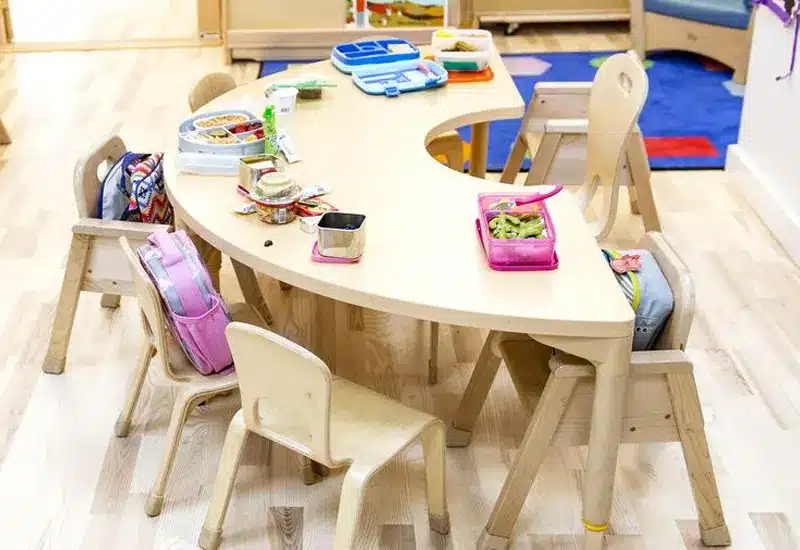
Tables and chairs are the basic components of preschool furniture. They must be durable, easy to clean and ergonomically designed. Preschool activities require tables with multiple uses. Here is our selection of tables and chairs suitable for preschool classrooms.
- Adjustable Height Tables and Chairs: Can be adjusted to accommodate different age groups and activities. Ensures ergonomic seating and flexibility in classroom settings.
- Collaborative Tables: Designed for group activities, fostering teamwork and communication. Ideal for promoting social interaction and cooperative learning.
- Activity Tables: Multi-functional with storage options for various activities.Perfect for arts, crafts, and sensory play, supporting diverse learning experiences.
- Individual Desks: Provides personal space for focused tasks and individual work. Encourages independence and concentration in young learners.
- Folding Tables: Easy to store and transport, providing flexibility for multi-purpose spaces.
- Sensory and Sand Tables: These can be used for various learning activities, from science experiments to imaginative play.
- Feeding Tables: They create a dedicated space for mealtimes, helping establish a routine and making educating children about nutrition and healthy eating easier.
Storage furniture helps keep the classroom organized and clutter-free. It includes items like shelves, cubbies, and cabinets that store toys, books, and learning materials.
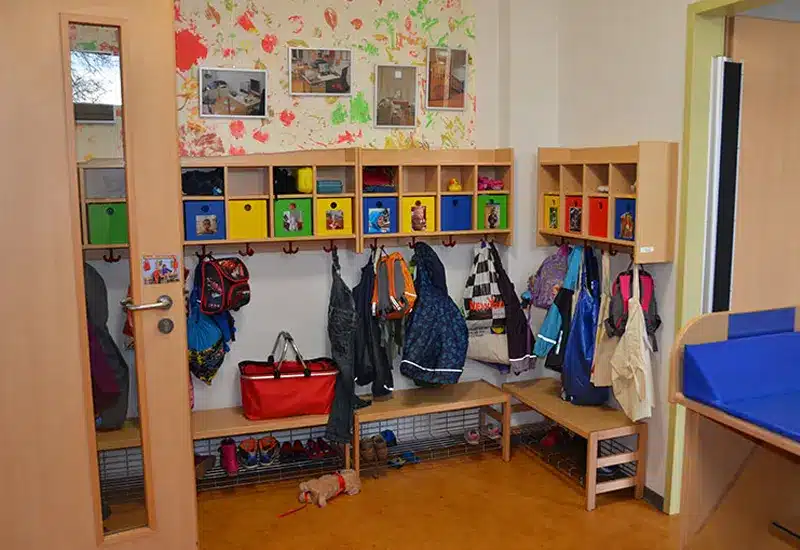
- Cubbies and Lockers: Individual storage for personal belongings, easy access. Helps children organize their items, promoting responsibility.
- Rolling Carts: Portable and versatile, can be moved around the classroom as needed.
- Storage Bins and Baskets: Flexible storage options for various items, often used within shelving units for better organization.
- Shelving Units: Open shelves for visibility and accessibility of materials. Encourages children to select and return items independently, fostering autonomy.
- Cabinets with Doors: Secure storage for teacher supplies and less frequently used materials.
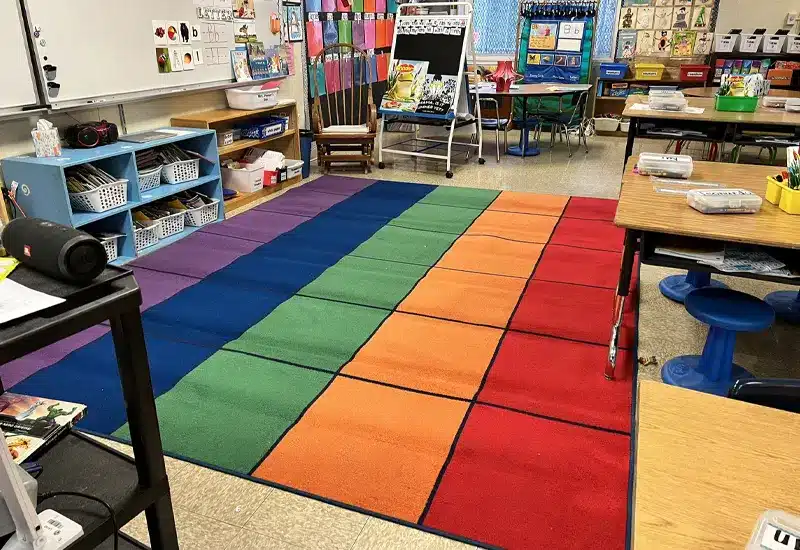
Floor mats are versatile pieces of preschool furniture. They provide a comfortable area for various activities, from storytime to nap time.
- Alphabet and Number Mats: Combines learning with play, reinforcing basic concepts.
- Puzzle Mats: Interlocking mats that can be customized to fit any space, providing a soft and safe play area.
- Nap Mats: Cushioned mats specifically designed for nap time, ensuring comfort and hygiene.
- Outdoor Mats: Durable mats designed for outdoor use, providing a safe play surface on playgrounds.
Arts and media furniture support creative activities and digital learning. This category includes easels, art tables, and media centers.
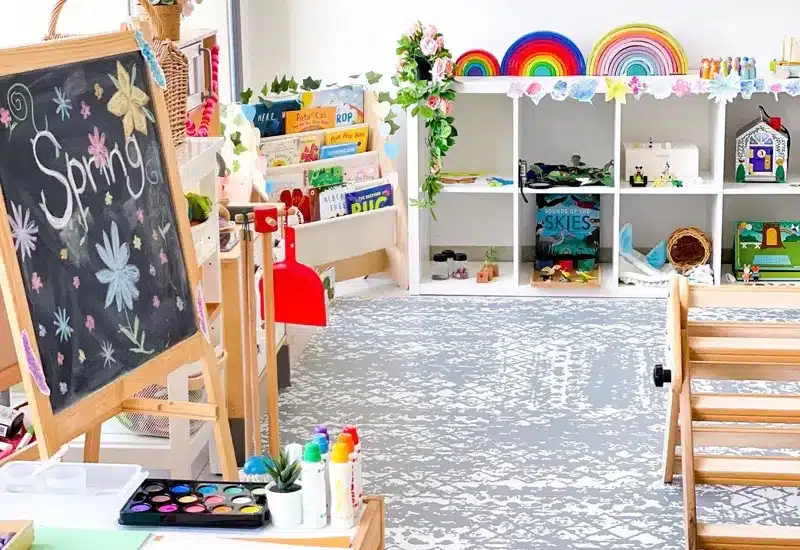
- Easels: Provide a vertical surface for painting and drawing, often with storage for art supplies.
- Art Stations: Dedicated areas with storage for art supplies. Organizes materials and provides a focused space for creativity.
- Media Centers: Furniture designed to hold electronic devices like computers and tablets, with proper cable management.
- Display Boards: Boards showcase children’s artwork and foster pride and creativity.
- Craft Tables: Large surfaces for group art projects. Promotes collaborative creativity and teamwork.
If you want to buy furniture for your nursery, contact Xiha Montessori.
We are a preschool furniture manufacturer and supplier with 20 years of experience; we have served more than 2,000 kindergartens and educational institutions nationwide, and from classroom design to preschool furniture purchase, we provide a one-stop service.
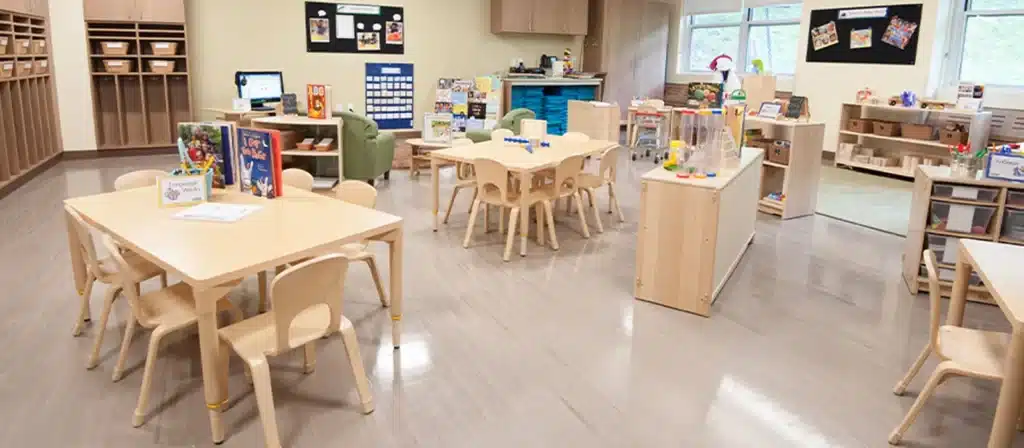
Preschool Learning Environments
Preschool learning environments stimulate a child’s curiosity and enthusiasm for learning in a space that supports and enhances the educational experience of young children (typically ages 3 to 5). This environment is created to promote cognitive, social, emotional, and physical development through a variety of activities and interactions. It allows children to have an enjoyable school day.
Creating a preschool learning environment requires thoughtful planning and attention to detail. Classroom colors, classroom layouts, furniture and resources need to be considered.
The Impact of Furniture on Learning Environment in Preschool
- Comfort: Young children spend considerable time sitting and engaging in various activities, so it is crucial to have comfortable seating arrangements. Uncomfortable chairs or tables can distract children from focusing on their tasks and hinder their ability to learn effectively.
- Safety: Furniture should be designed to ensure children’s safety, with no sharp edges or potential pinch points. Any furniture with moving parts, such as chairs or desks, should be checked for stability to prevent accidents.
- Functionality: Preschool furniture should be designed with functionality in mind. Shelves and storage units should be easily accessible to children to encourage independent learning and exploration. Tables and chairs should be adjustable in height to cater to children of different ages and sizes.
- Durability: Children can be tough on furniture, so choosing items that can withstand the wear and tear of daily use is essential. Durable furniture can save money in the long run by reducing the need for frequent replacements.
- Aesthetics: The look and feel of a classroom can have a significant impact on the learning environment. Visually appealing furniture can create a more inviting and stimulating atmosphere, encouraging children to engage and participate in activities.
- Flexibility: The ability to rearrange furniture to suit different activities can create a more dynamic learning environment. Mobile furniture, such as carts or movable bookshelves, can help teachers adapt to changing lesson plans or activities.
- Sustainability: Eco-friendly furniture is becoming increasingly popular, and for good reason. Choosing sustainable materials and manufacturing practices can reduce the environmental impact of the classroom and promote a sense of responsibility and care for the planet among children.
- Be a Tool for Personal Growth: Furniture in a preschool classroom isn’t just about physical support and personal growth. The right furniture can encourage independence, with children learning to navigate and use their environment effectively. This includes furniture that’s accessible and manageable for children, fostering a sense of autonomy and self-confidence.
- Promote Learning: Furniture designed for educational purposes can significantly enhance learning. This includes tables with built-in measurement markings or storage units that double as display areas for educational materials. Furniture should be seen as an active component in the learning process, providing opportunities for exploration and discovery.
- Impact on Life: The early years are critical to a child’s development and the classroom environment, including the furniture, plays an important role. Well-designed and carefully arranged furniture affects children’s habits, attitudes toward learning, and overall preschool experience. It’s about creating a space that is not only functional but nurturing and inspiring.
Factors to consider when choosing preschool furniture
- Safety: Safety is a top priority in any preschool environment. When choosing furniture, look for sturdy, stable pieces with no sharp edges or corners. Avoid pieces with small parts that could pose a choking hazard, and make sure any hardware or fasteners are securely attached and not easily accessible to children.
- Comfort: Young children spend much time sitting, so choosing comfortable and supportive furniture is essential. Look for chairs and sofas with good cushioning, back support, and tables at the right height for children to work comfortably. Appropriately sized furniture for children will also promote good posture and reduce strain.
- Durability: Preschool furniture should withstand heavy use and abuse from active young children. Look for pieces that are made from high-quality materials and are well-constructed. Consider materials like solid wood or sturdy plastic, and avoid furniture with flimsy or easily breakable parts.
- Functionality: Preschool furniture should be designed with the needs of young children in mind. Look for easy pieces for children to use and promote independence, such as low bookshelves that allow children to access books independently. Furniture that can be easily moved and rearranged is also helpful in a preschool environment.
- Flexibility: As the preschool environment‘s needs change, so should the furniture. Look for versatile pieces that can be used in various ways, such as tables that can be easily rearranged into different configurations. Furniture that can be adjusted to fit the needs of different age groups is also a plus.
- Age appropriateness: Preschool furniture should be designed specifically for the age group of the children using it. Look for pieces that are appropriately sized for young children, with low seats and tables. Consider furniture that promotes specific developmental milestones, such as fine motor skills.
- Aesthetics: Although not the most important consideration, the look and feel of preschool classroom decorations can contribute to the overall environment. Look for visually appealing pieces and that match the aesthetic of the space. Consider furniture that comes in various colors or that can be easily painted or decorated to match the décor.
5 Tips for Choosing Preschool Furniture
Choosing preschool furniture is the first step in designing a preschool facility. As a preschool owner or parent, purchasing furniture for a preschool can be a daunting task. You must ensure the furniture is comfortable, durable and safe for children. In addition to these considerations, many other factors must be considered when purchasing furniture for your nursery. So, let’s learn some tips about choosing preschool furniture.
1. Choosing Preschool Furniture Dimensions
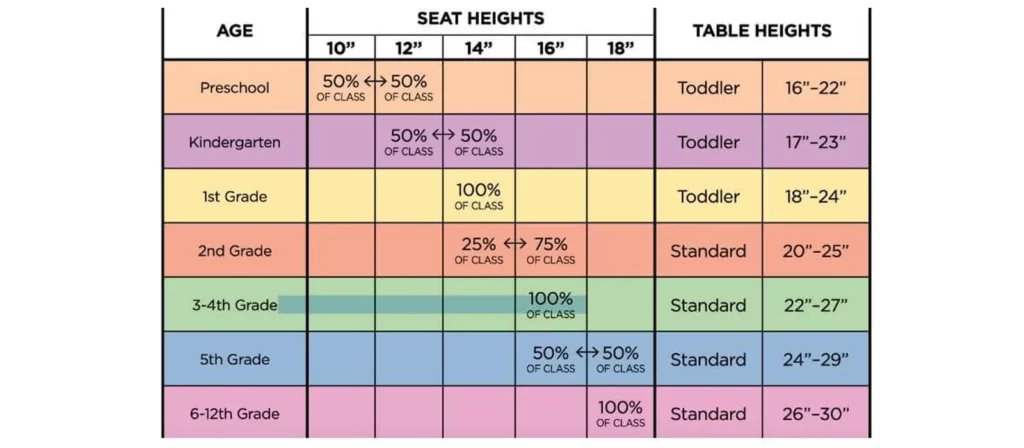
Understand the size of furniture as it relates to preschoolers. Furniture must be appropriately sized to ensure comfort and accessibility. This includes chairs and tables that are the right height for children to sit comfortably with their feet flat on the floor and their arms at the right height for movement. It’s about striking a balance between furniture that is safe for children and usable, fostering independence and confidence.
2. Preschool Seating: Mix it Up
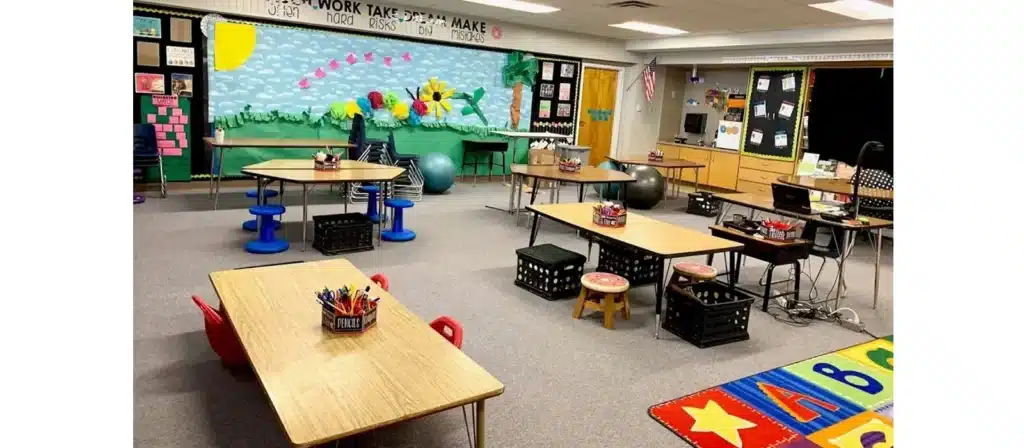
Variety in seating options is key in a preschool setting. This includes traditional chairs, soft seating, floor cushions, and benches. Different seating options cater to various activities and learning styles, promoting flexibility and creativity. It’s important to provide a range of seating that supports different postures and movements, effectively facilitating individual and group activities.
3. Preschool Desk: Gentle Curves and Angles
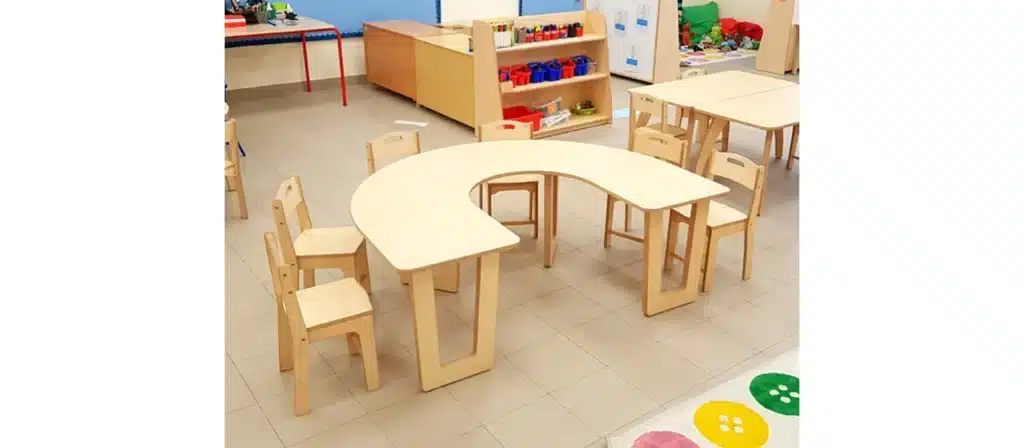
The design of preschool desks should prioritize safety and ergonomics. Gentle curves and rounded edges minimize the risk of injury, while angled or adjustable surfaces cater to various activities, from writing to crafting. Desks should offer a comfortable space for children to engage in learning activities, with enough room for their materials and personal space.
4. Preschool Storage
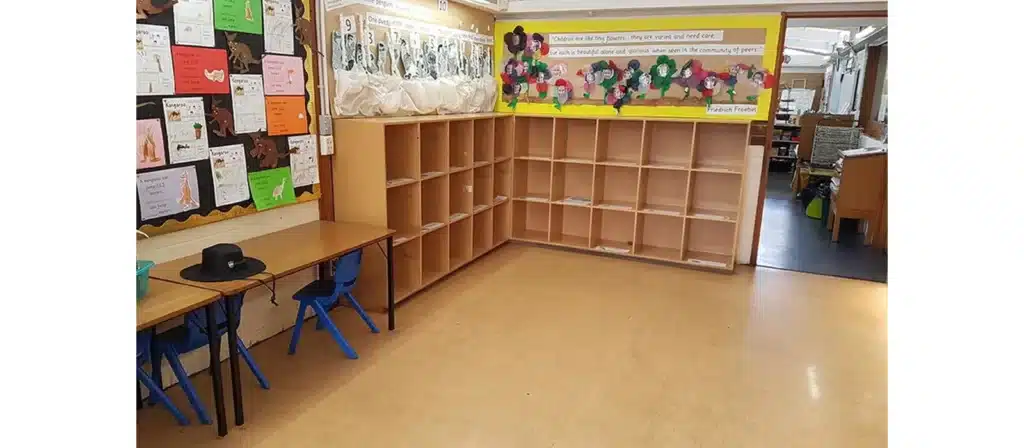
Effective storage solutions in preschool environments help maintain organization and accessibility, fostering a sense of order and independence as children learn to retrieve and return materials independently. Storage units should be located at an appropriate height for young children, have open shelves and be clearly labeled to encourage self-service and responsibility.
5. Choosing Preschool Furniture Colors
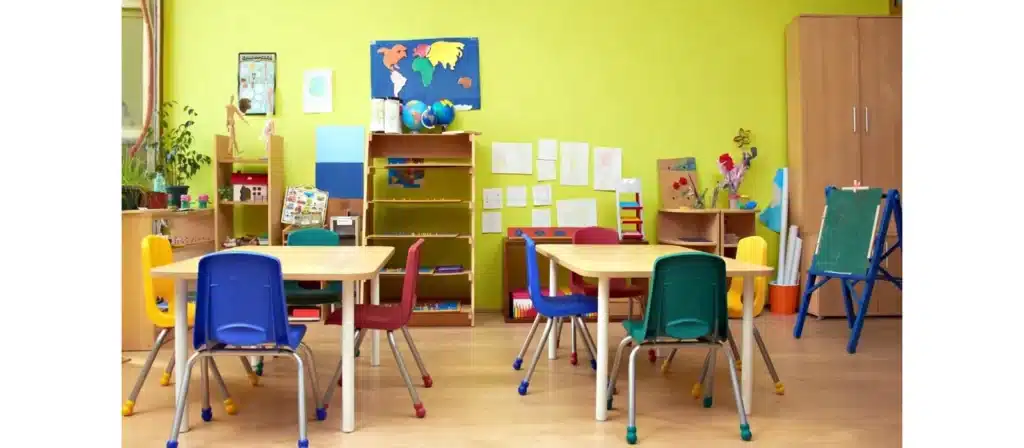
The color palette of preschool furniture can significantly influence the classroom’s atmosphere. Bright, engaging colors stimulate learning and creativity, while more subdued tones can create a calming environment. It’s about creating a balance, using color to delineate different classroom areas and aid in young learners’ cognitive development.
Preschool Furniture Materials
The materials used in preschool furniture ensure safety, durability, and functionality. Preschool furniture is typically made from various materials, each with its advantages. Understanding these materials can help you choose the best options for your preschool.
Common Materials
The following are common preschool furniture materials:
| Materials | Characteristics |
|---|---|
| Solid Wood | 1. Highly durable and long-lasting. 2. Provides a natural, warm aesthetic. 3. Can be finished with non-toxic paints or varnishes. 4. Suitable for heavy use and can withstand wear and tear. |
| Plastic | 1. Lightweight and easy to move. 2. Available in various colors and designs. 3. Easy to clean and maintain. 4. Resistant to stains and water damage. |
| Metal | 1. Extremely durable and robust. 2. Resistant to wear and tear. 3. Can be combined with other materials for comfort. 4. Provides a modern, sleek look. |
| Laminate | 1. Scratch-resistant and durable 2. Easy to clean and maintain 3. Available in a variety of colors and finishes |
Smooth Rounded Edges
Sharp corners can pose a significant risk to young children, who are often active and unaware of potential hazards. Rounded edges on furniture minimize the risk of injuries from falls or bumps.
Furniture with rounded edges not only improves safety but also adds to the aesthetic appeal of the classroom. Smooth lines and curves create a more harmonious and inviting environment that encourages exploration and learning.
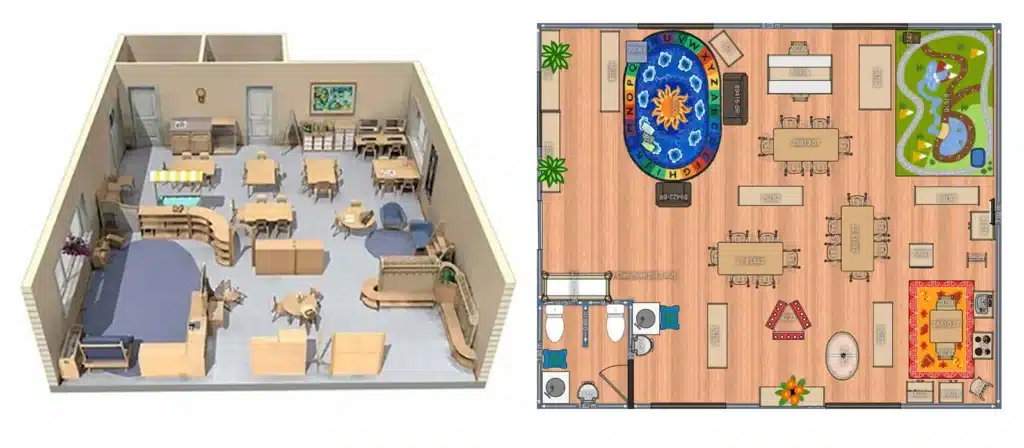
Designing a Preschool Classroom
Designing a preschool classroom requires careful planning to create a safe, engaging, and functional environment.
Differences Between Preschool and Kindergarten
Understanding the differences between preschool and kindergarten is essential when designing a classroom. Preschool focuses on developing basic social, emotional, and cognitive skills through play-based learning. In contrast, kindergarten is more structured, emphasizing academic readiness.
Key Differences:
- Curriculum: Preschool uses a play-based approach, while kindergarten incorporates more structured learning.
- Furniture Needs: Preschool furniture is typically more flexible and suited for various activities, while kindergarten furniture may focus more on supporting academic tasks.
- Space Usage: Preschool classrooms require areas for play, rest, and diverse activities, whereas kindergarten may allocate more space for desks and instructional materials.
Benefits of Preschool Programs
Preschool programs offer many benefits that contribute to the overall development of children.
The preschool program provides rich learning experiences that promote cognitive growth. Improves problem-solving skills, creativity, and early literacy and numeracy.
Children learn to interact with peers and adults and develop basic social skills. Preschool helps children learn to share, take turns, and resolve conflicts.
The preschool program includes motor skills that promote physical development. Fine motor skills are developed through drawing and cutting, while gross motor skills are enhanced through outdoor play and physical activity.
Conclusion
In conclusion, choosing furniture for your preschool classroom can significantly impact the learning environment. From comfort to functionality and aesthetics to sustainability, furniture plays a crucial role in fostering engagement and promoting learning and development in young children.
At Xiha Montessori, we understand these needs and strive to provide furniture that meets these diverse requirements, ensuring preschoolers a positive and productive learning environment.

